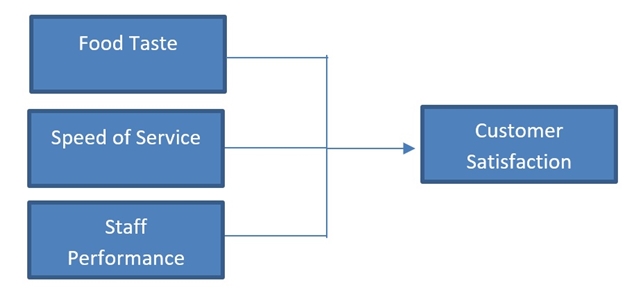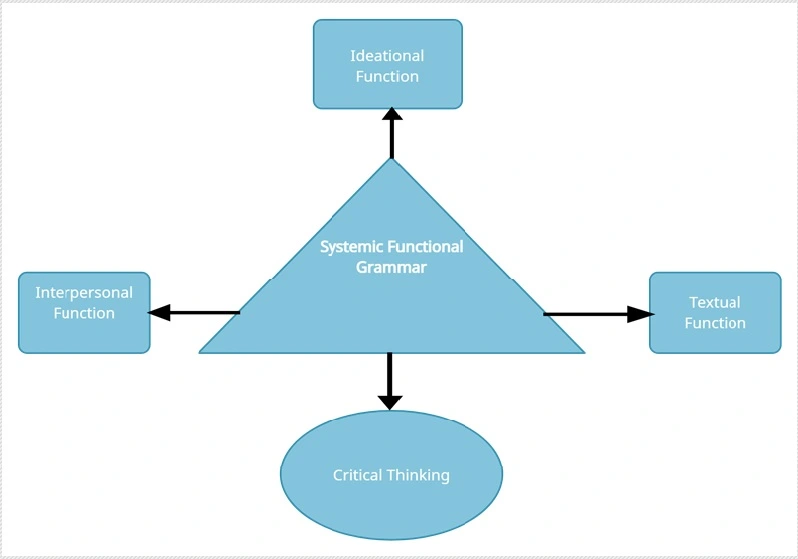In this article, you will learn everything you need to know about conceptual frameworks, from what they are to how to make your own. Whether you are a novice or an experienced researcher, this article is for you. And by the end of this article, you will have a better understanding of scientific literature and a better grasp of conceptual frameworks.
What is a conceptual framework?
Research is an academic activity that necessitates a significant amount of abstraction or the creation of concepts or ideas in your mind about everything in your surroundings. This activity immerses you in a variety of higher-order thinking processes such as interpretation, criticism, application, and creation at all levels. Research, as a result of mental conceptions and evaluated holistically, must appear understandable to those who are eager to study the research findings. Because of the cognitive character of this scholarly academic task known as research, you will need a specific scheme, thorough plan, or system to describe the components of the research, including the relationships of the research elements.
You must create a conceptual framework for your study if you want to explain the ins and outs of your research in a nutshell. A conceptual framework is a graphical representation of your conceptions or ideas about the fundamental structure or components of your research, as well as the interactions between these pieces. It is a graph or non-prose material, specifically a schematic diagram that depicts well-ordered research elements. A conceptual framework is a comprehensive overview or strategy that gives meaning to your research by providing a well-planned arrangement of the components of your investigation.
Conceptual frameworks, on the other hand, are not usually necessary to be published in scientific publications. Even the average person can make their own. True scientific and authoritative examples, on the other hand, are often found in scientific journals. Furthermore, conceptual frameworks are not created at random by academics. They perform extensive literature evaluations to support their conceptual frameworks, ultimately increasing conceptual framework legitimacy.
Purposes of a Conceptual Framework
The conceptual framework illustrates the organization, sequence, and purpose of your research. It is a crucial first step in your research because a schematic diagram, which is also discussed vocally, enables readers to have a general understanding of your work. It describes the research activities you want to conduct, the manner in which you intend to conduct these activities, and the knowledge you possess to demonstrate your expertise with your study topic or research challenge. In a research study, it also serves the goal of illustrating the concepts and their interrelationship.
How to Make a Conceptual Framework?
Before you prepare your conceptual framework, you need to do the following things:
1. Choose your topic
As a researcher, you have the option of focusing on a wide range of topics. However, we must remember that not all of the world’s resources are available to us. The research could also be time-limited. It is therefore important to select a topic that can be completed within the time and resources available.
2. Make your research question
The research question, on the other hand, must be narrowly focused. All of the specifics must be laid out in a clear and concise manner. To put it simply, this is where your conceptual framework comes into play. For your research, you need to come up with a clear and reasonable question. This question should be one you’re really interested in to have a concise conceptual framework.
An important part of your conceptual framework and research is the development of a question that will guide your investigation. As a result, you won’t get lost while writing the paper.
3. Conduct a review of the literature
A review of literature is a process in which a researcher examines previously published work on a particular subject from reputable sources. You and your readers will benefit from a literature review if it reveals the current state of knowledge on your chosen topic, including its strengths and weaknesses. When conducting a literature review, keep in mind that it should be relevant to the topic under consideration, synthesize the findings of the publications you have read, and identify any areas in which additional information or evidence is needed to support the claim under consideration. Having a review of the literature narrows down what you will be putting in your conceptual framework.
4. Choose your variables
Since you have done your research, by this time, you will already be able to identify and pinpoint the variable that has been discussed in the publications you have studied and try to make a connection or decipher how they are linked. As you must have already read a lot of literature, you will find many possible variables to choose from when conducting your study. However, when creating research in general, it is vital that you only select the essential variables as not all of them will be significant; as you must have read much scientific literature, you should be able to discern the important ones by this point. And when creating a conceptual framework in particular, even though you can choose all the variables in the world, it would be best not to since too many variables in a conceptual framework will be confusing. It is also not a good idea to choose too few variables, or else your study might be too simple. As mentioned in the previous step, you have to find the right level of intricacy in your research that will fit your resources and time allocation.
5. Choose your relationships
Now that you have chosen your variables, you have to decide how these variables are related to one another. Given that you have already read much literature on your topic, you should already define how each of your variables is connected. This is especially important to note as this will largely impact how your conceptual framework will look once you start making the diagram.
6. Create the conceptual framework
Now that you have achieved all the previous steps, the final step is to illustrate the diagram. How you demonstrate the diagram will differ on a case-to-case basis. Still, variable names have to be laid out clearly and put into rectangles, variables have to be connected with lines and arrows, and the arrowheads will differ depending on the nature of the relationships. Single-head arrows are for one-directional relationships (i.e. A affects B and B does not affect A), and double-headed arrows are for relationships that are 2-directional (i.e. A affects B and B also affects A). Also, lines do not have to be limited to connecting only 2 variables (i.e. A and B); some relationships can be between more variables (i.e. A affects B and also C).
Tips for Writing a Conceptual Framework
- Familiarize yourself with the objective of the conceptual framework.
- Create the conceptual framework based on your own knowledge of the components and their interrelationships.
- Make sure that everything in the conceptual framework relates back to the study’s stated goals.
- Share your conceptual framework with others to solicit feedback and suggestions for development.
Conceptual Framework Examples
To have a clearer idea of the process of making a conceptual framework, let us try to make concrete examples of it.
Sample 1
Background: I am a co-owner of a branch of Burger King.
1. Choose your topic
I am interested to know what affects the satisfaction of our customers. My goal is to know what specific parts of our business can influence our customers’ experience.
2. Make your research question
The research question I can formulate is “What affects customer satisfaction of Burger King?
3. Conduct a review of the literature
I read up on different publications related to food establishments, specifically burger joints, and customer satisfaction. From here, I can already have an idea of the variables I can pinpoint from those publications that have been proven to affect customer satisfaction.
4. Choose your variables
With all the books, scholarly articles, and research I have gone through, it can be determined that there are three main variables: food taste, speed of service, and staff performance. Customers are very much concerned with the taste of the product. The amount of time it takes to serve them also affects how pleased or displeased they are. Lastly, the performance of the staff that serves also affects their experience.
5. Choose your relationships
I was able to determine that the three variables: food taste, speed of service, and staff performance, are determining factors of customer satisfaction.
6. Create the conceptual framework

Sample 2
Research Problem of Topic: “Improving Critical Thinking through Systemic Functional Grammar”
Systemic Functional Grammar or SFG is a modern language theory that states that man’s critical thinking increases whenever he uses language for these reasons: first, for ideational function or for knowledge acquisition; second, for interpersonal function or creating human relationships, and third, for textual functions or for strategic and coherent expression of ideas, In this case, the independent variables are the SFG components (ideational, interpersonal, and textual functions) and the dependent variable is critical thinking. Here is the conceptual framework to present the concepts underlying this study. (Ravich & Riggan 2012)

Conceptual Framework vs Theoretical Framework
The conceptual framework shows and illustrates all of your plans, concepts, or ideas regarding the various aspects of your research both graphically and verbally. However, the conceptual framework does not fully and completely explain all of the study’s elements, both concrete and abstract, when seen in such a broad or numerous manner. The theoretical framework, which is a separate section of your research paper, provides and discusses the theories, principles, generalizations, and research findings that are related to your research topic.
The conceptual framework gives readers a clear mental image of the fundamental organization of the study, the relationships between variables, and other relevant facts. Theoretical framework, on the other hand, helps individuals comprehend the relationships between the many research elements and the evidence-based truths, concepts, theories, and assumptions that support each part of the study.
The ability to think clearly and accurately about the many different aspects of your study is facilitated by having a thorough understanding of the theoretical principles governing or controlling those things. As a result, you have a better understanding of both the central issues in your research as well as its other elements. The theoretical framework provides the theoretical underpinnings of the research, while the conceptual framework provides a general sketch of how the research will be conducted using theories, principles, or generalizations that have been supported by facts and logical reasoning.
how do I create a conceptual framework for Logistics management performance and customer service satisfaction
After 1000’s of search trying to understand conceptual frame, your explanations made it so easy for me. Thank you for this useful work put together
thank you for providing such important idea and now i would like to ask one question
let my research paper has five chapters
so in which chapter will I include my conceptual framework?
Interesting reading
Very useful explanation. Got a point